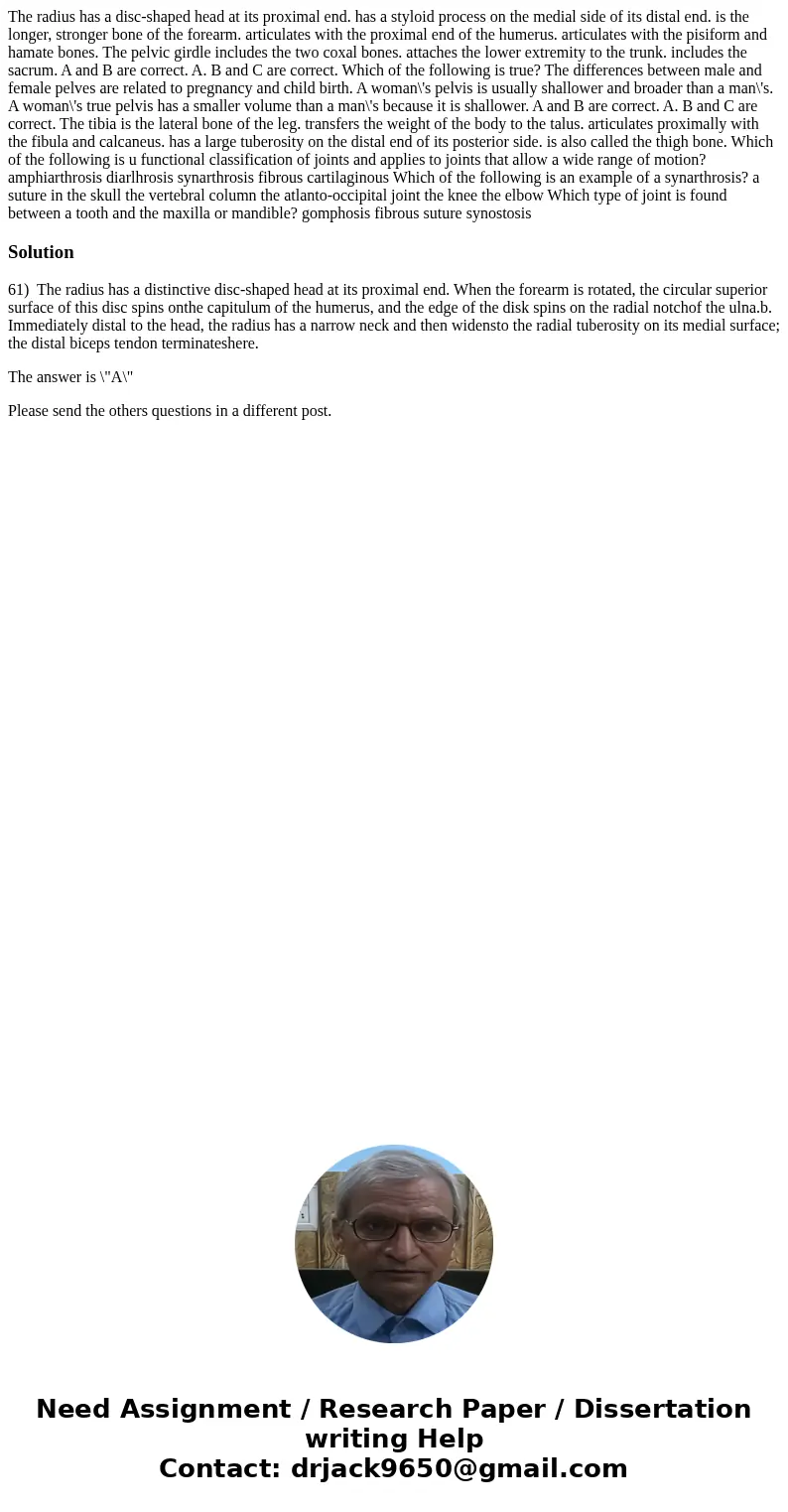The radius has a discshaped head at its proximal end has a s
The radius has a disc-shaped head at its proximal end. has a styloid process on the medial side of its distal end. is the longer, stronger bone of the forearm. articulates with the proximal end of the humerus. articulates with the pisiform and hamate bones. The pelvic girdle includes the two coxal bones. attaches the lower extremity to the trunk. includes the sacrum. A and B are correct. A. B and C are correct. Which of the following is true? The differences between male and female pelves are related to pregnancy and child birth. A woman\'s pelvis is usually shallower and broader than a man\'s. A woman\'s true pelvis has a smaller volume than a man\'s because it is shallower. A and B are correct. A. B and C are correct. The tibia is the lateral bone of the leg. transfers the weight of the body to the talus. articulates proximally with the fibula and calcaneus. has a large tuberosity on the distal end of its posterior side. is also called the thigh bone. Which of the following is u functional classification of joints and applies to joints that allow a wide range of motion? amphiarthrosis diarlhrosis synarthrosis fibrous cartilaginous Which of the following is an example of a synarthrosis? a suture in the skull the vertebral column the atlanto-occipital joint the knee the elbow Which type of joint is found between a tooth and the maxilla or mandible? gomphosis fibrous suture synostosis
Solution
61) The radius has a distinctive disc-shaped head at its proximal end. When the forearm is rotated, the circular superior surface of this disc spins onthe capitulum of the humerus, and the edge of the disk spins on the radial notchof the ulna.b. Immediately distal to the head, the radius has a narrow neck and then widensto the radial tuberosity on its medial surface; the distal biceps tendon terminateshere.
The answer is \"A\"
Please send the others questions in a different post.

 Homework Sourse
Homework Sourse